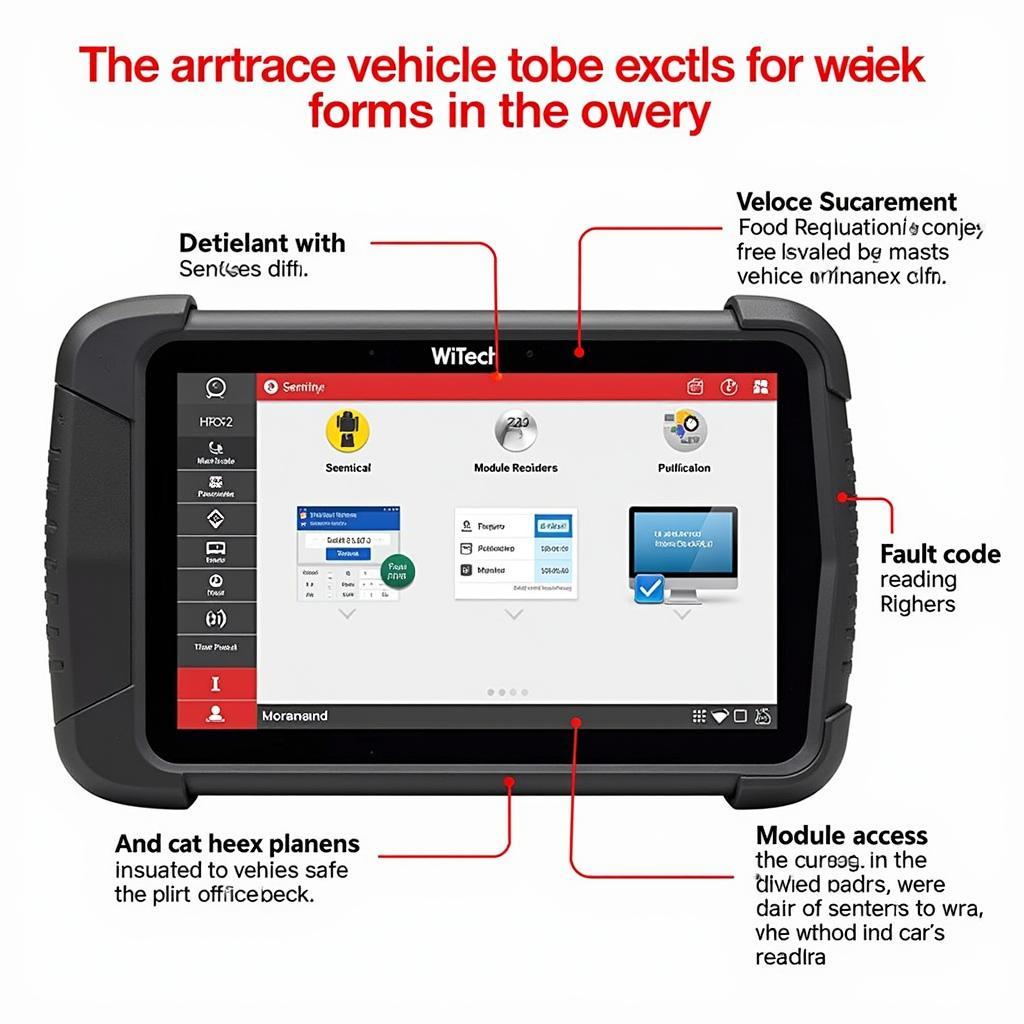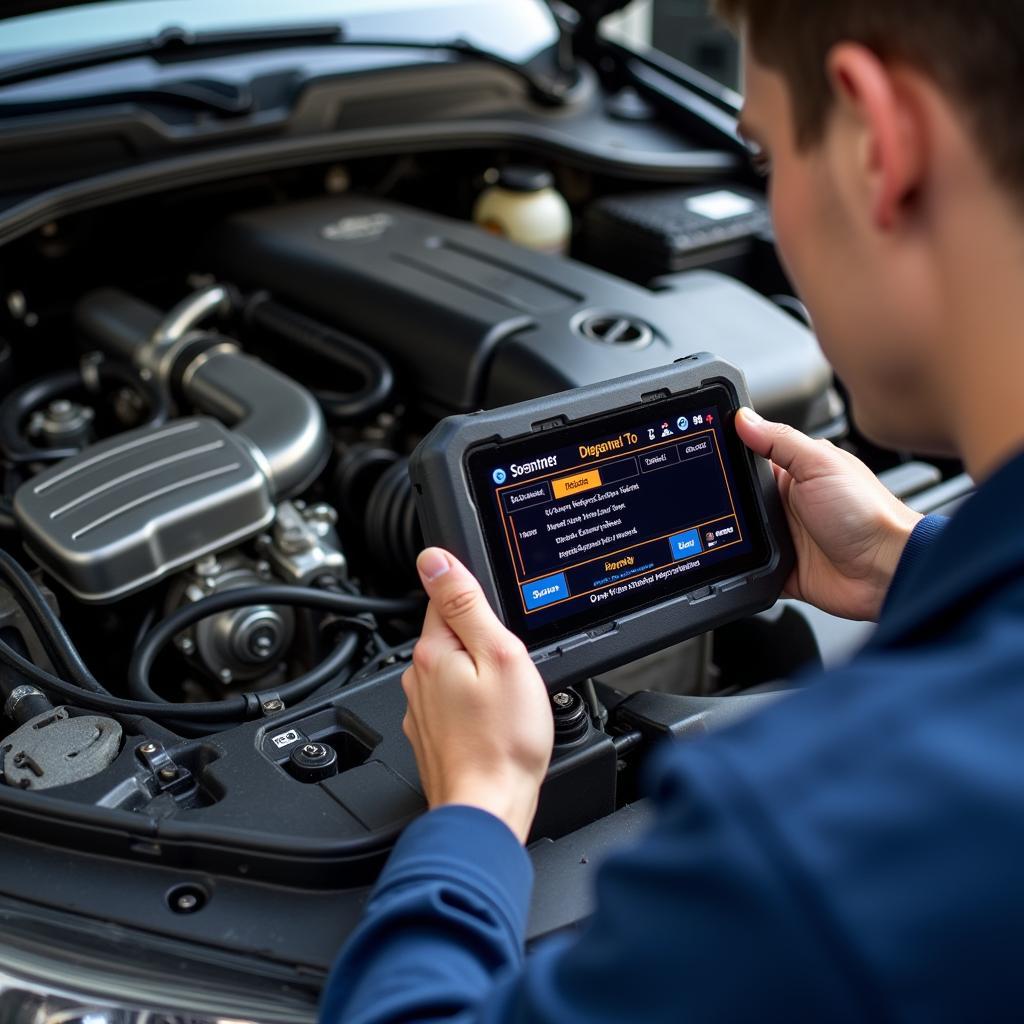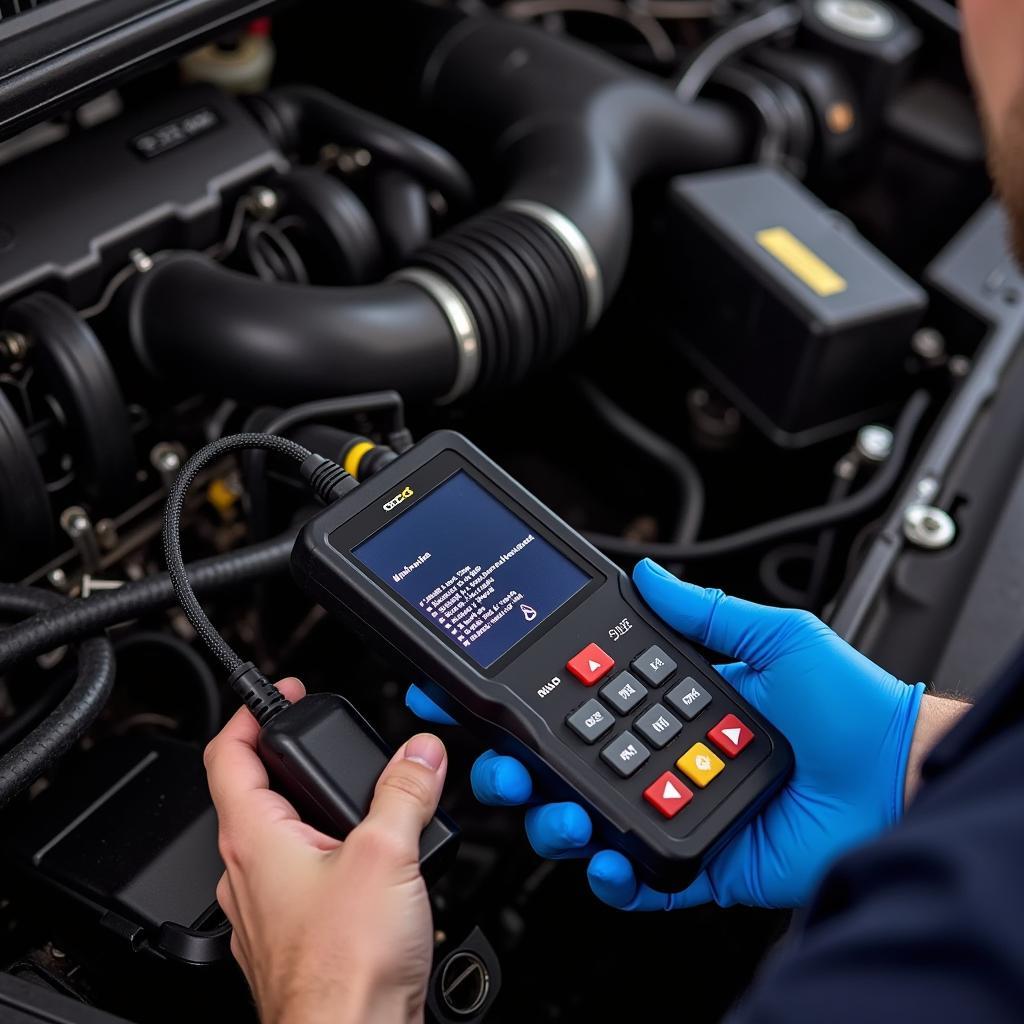Modern vehicles are complex machines, relying heavily on intricate electronic systems. When something goes wrong, pinpointing the issue can be a daunting task without the proper equipment. This is where a Repair Diagnostic Tool becomes essential, offering a window into the inner workings of your car’s computer system.
Similar to computer repair diagnostic tools, a good automotive repair diagnostic tool can save you time, money, and frustration by quickly and accurately identifying the root cause of a vehicle malfunction. Choosing the right tool, however, can be overwhelming given the wide variety of options available. This comprehensive guide aims to empower car owners, repair shop managers, and automotive technicians with the knowledge needed to select and effectively use a repair diagnostic tool.
What are Repair Diagnostic Tools and Why are They Important?
Repair diagnostic tools are specialized electronic devices that connect to a vehicle’s onboard diagnostic (OBD) port. They retrieve diagnostic trouble codes (DTCs) stored in the vehicle’s computer, providing valuable insights into the health and performance of various systems. From engine misfires and transmission problems to airbag malfunctions and ABS issues, a repair diagnostic tool can pinpoint the source of the problem, guiding you toward the appropriate repair. Imagine trying to find a single faulty wire in a complex electrical harness – a repair diagnostic tool is like having a roadmap that leads you directly to the issue.
Different Types of Repair Diagnostic Tools: Finding the Right Fit
The market offers a diverse range of repair diagnostic tools, each with varying capabilities and price points. Basic code readers can retrieve generic DTCs, while more advanced scan tools provide access to manufacturer-specific codes, live data streams, and bi-directional control functionalities. Understanding the differences between these tools is crucial in selecting the one that best meets your needs.
- Code Readers: These entry-level tools are ideal for DIY enthusiasts and car owners who want to quickly check for basic error codes.
- OBD-II Scan Tools: These provide more detailed information than code readers, including live data and freeze frame data.
- Professional Scan Tools: Designed for professional technicians, these tools offer advanced features like bi-directional control, allowing you to test components and perform system resets.
How to Use a Repair Diagnostic Tool Effectively
Using a repair diagnostic tool effectively involves more than just plugging it in and reading the codes. A methodical approach is key to accurate diagnosis and successful repairs.
- Locate the OBD-II Port: The OBD-II port is typically located under the dashboard on the driver’s side.
- Connect the Tool: Turn the ignition key to the “on” position without starting the engine, then connect the repair diagnostic tool to the OBD-II port.
- Retrieve DTCs: Select the “read codes” option on the tool to retrieve any stored DTCs.
- Interpret the Codes: Use a reliable DTC database or repair manual to understand the meaning of each code.
- Further Diagnosis: Depending on the code, additional diagnostic steps may be necessary, such as checking wiring diagrams or using a multimeter.
- Clear the Codes: After completing the repair, clear the DTCs using the diagnostic tool.
Choosing the Right Repair Diagnostic Tool for Your Needs
Selecting the right repair diagnostic tool depends on your level of expertise, the types of vehicles you work on, and your budget. While a basic code reader might suffice for a car owner, a professional technician would benefit from a more advanced scan tool with comprehensive functionalities.
“Investing in a quality repair diagnostic tool is like having a dedicated detective for your vehicle,” says renowned automotive expert, Dr. James Carter. “It can save you countless hours of troubleshooting and help you avoid costly misdiagnoses.”
Keeping Up with Advancements in Automotive Technology
The automotive industry is constantly evolving, with new technologies and diagnostic systems emerging regularly. Staying up-to-date with the latest advancements is essential for both professionals and car owners. Attending training courses, subscribing to automotive publications, and regularly updating your repair diagnostic tool software are key to remaining proficient in this ever-changing field. Resources like diagnostic resources and tools can be invaluable in this regard.
Common Mistakes to Avoid When Using a Repair Diagnostic Tool
While repair diagnostic tools are powerful diagnostic aids, they are not foolproof. Misinterpreting codes, neglecting other diagnostic procedures, and failing to address underlying issues can lead to inaccurate diagnoses and ineffective repairs.
- Relying Solely on DTCs: DTCs provide clues, not definitive answers. Always perform a thorough visual inspection and consider other relevant information.
- Ignoring Freeze Frame Data: Freeze frame data captures the vehicle’s operating conditions at the time the code was set, providing valuable context for diagnosis.
- Failing to Update Software: Outdated software can limit the tool’s functionality and prevent it from accurately diagnosing newer vehicle systems.
The Future of Repair Diagnostic Tools
The future of repair diagnostic tools promises even greater sophistication and integration with other automotive systems. Cloud-based diagnostics, remote diagnostics, and advanced data analytics are just a few of the exciting developments on the horizon. Consider the advantages of a remote diagnostics tool for quick and convenient troubleshooting. These advancements will further empower technicians and car owners, enabling faster and more efficient vehicle repairs. Just as with advancements in pc repair boot cd software diagnostic tools, the focus is on streamlining the repair process.
Conclusion
A repair diagnostic tool is an invaluable asset for anyone involved in automotive repair and maintenance. By understanding the different types of tools, learning how to use them effectively, and staying current with the latest advancements, you can significantly improve your diagnostic capabilities and ensure accurate and efficient vehicle repairs. For reliable and high-quality diagnostic tools, consider exploring options like the dsm mini diagnostic tool. Contact ScanToolUS at +1 (641) 206-8880 or visit our office at 1615 S Laramie Ave, Cicero, IL 60804, USA for further assistance and expert advice. We are here to help you navigate the complex world of automotive diagnostics.



